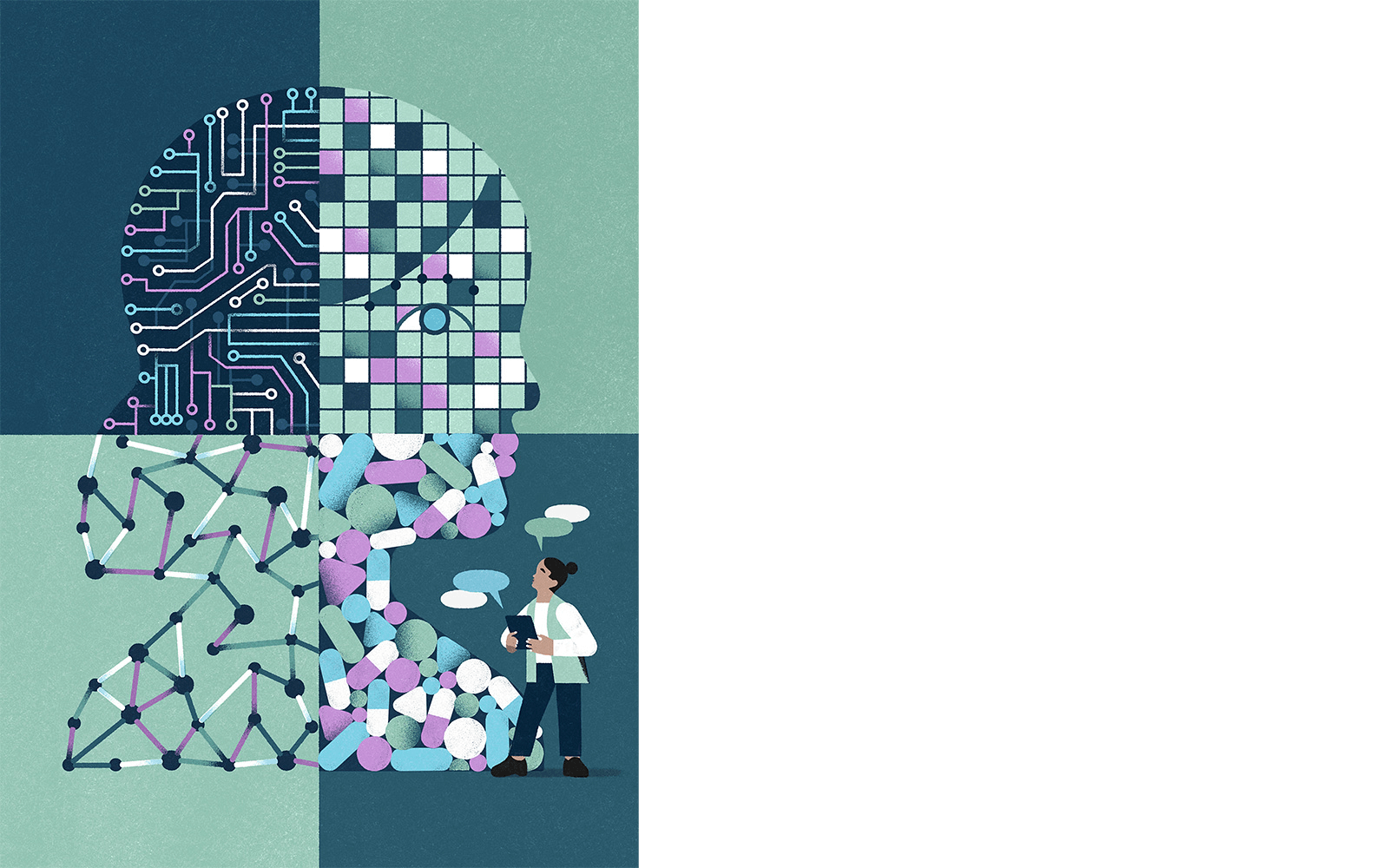
Sara Skoog started college as pre-med, switched her major to English and has spent 20+ years writing about medical education and health care. Hobbies include baking, crosswords and not watching sports.
Author Page
Marilyn Hanson, EdD, associate vice president for interprofessional operations, on effectively interfacing with AI …
AI systems work by producing new content similar to what a human can do. Just as humans learned to write, draw, code, etc., so can generative AI. ChatGPT and Gemini are AI tools for text generation, DALL-E is for image creation, and invideo is for video generation. As you work with the different AI systems, you get a better understanding of their capabilities. Each has strengths and limitations based on the different datasets they use.
What you get from an AI system depends on what you put into it. The more specific your prompt, the more likely AI will produce what you want. The act of crafting or designing effective prompts is called “prompt engineering.”
If a student were to prompt AI to learn specifics about patient notes, asking, “What is a patient note?” will produce pages of unfocused responses they need to wade through to find the answer. Phrasing the prompt, “Explain the key components and purposes of a patient note in health care, and how these notes contribute to patient care and recordkeeping” gets a response that details the sections of a patient note, such as chief complaint, patient history, medication list, and even an overview of legal protections and improved patient outcomes that result from comprehensive patient notes.
James Carlson, PhD ’13, MS ’01, PA-C, CHSE-A, interim provost and vice president for interprofessional education and simulation, on using AI in clinical skills training, assessment and simulation …
Writing detailed case studies for use in our simulation labs can be very time-consuming — it can take seven or eight hours to write a credible case study grounded in current best clinical practices, and multiple variations of a case study need to be created to ensure our students become proficient clinicians.
We can leverage existing AI chat technology, such as ChatGPT, Google Gemini, NotebookLM or others, along with our department’s case-study template, to generate custom case studies. Our current template is about 10–12 pages long and includes all the things you need to know to create a case study for use in the simulation lab.
Working with AI is like having a conversation, asking clarifying questions to refine the answers. For example, I could give AI this prompt: “For a patient presenting with chest pain and shortness of breath for an hour, my presumptive diagnosis would be pulmonary embolus. Create a patient history and physical that supports this diagnosis, and provide other possible diagnoses. Include the patient’s social factors and family history. Be sure to reference best-practice guidelines.”
Let’s say AI didn’t turn out exactly what I wanted. Maybe the patient history included high blood pressure but nothing about how it was being managed. I would ask more detailed prompts to get that information: “What blood pressure medications, including doses, is the patient taking? Include the patient’s recent blood pressure readings.” AI should then provide an updated version of the case that includes the specific details needed for an accurate case study.
By having this back and forth “chat” with AI, I can complete the template in about five minutes and spend another 20–30 minutes reviewing it for accuracy — down from seven to eight hours — and it’s ready to go to one of our simulation technicians to prepare for student training.
Sean Kane, PharmD, senior associate dean, assistant dean for assessment and associate professor, College of Pharmacy, on how AI helps him help students prepare for their exams …
I’m using AI to generate ideas for practice-exam questions for my students. Students crave practice questions. But it’s time-consuming to draft 30 brand-new practice questions that aren’t the same questions you’ve already written for your exam. AI tools can provide a great starting point. I can give AI a prompt that specifies how many questions I want, the question format, how many answer options and so on. Many AI tools allow users to upload files such as PowerPoint slides to include even more details in the prompt.
By incorporating a variety of prompt-engineering best practices, I’m telling AI a specific task with detailed instructions so it can give me exactly what I need: “I want multiple-choice questions with four choices for answers; never use ‘all of the above’ as an option; do create questions that require a higher level of critical thinking and knowledge of multiple facts.”
I almost always revise the AI output or use it as inspiration for a similar question. AI is great for idea generation, but I add context based on my experience as a course director — something ChatGPT doesn’t have.
Santipongse Chatchavalvanich, MD, PhD, assistant professor, basic biomedical science, Dr. William M. Scholl College of Podiatric Medicine, on using AI to enhance critical thinking …
I’m learning by trying things for myself. I think that immersing yourself in the AI environment helps you understand how these things work, and that gives you ideas for other directions you could take this technology.
Traditionally, we give knowledge to our students through PowerPoints and lectures. A great benefit of AI is that it can spark ideas about how to present the same content but in different formats. It can help you create a diagram, a video or even a podcast — things students might find more palatable for learning.
The accuracy of the information behind it, of course, ultimately relies on you, as a faculty member, to use your expertise. AI doesn’t always get it right. But even that can be useful. I can take inaccurate information from AI and use it to promote critical thinking by having students review the information and determine if it is right or wrong based on what they learned in class that day.
The bottom line is we’ve got to keep ourselves informed on how fast AI is moving and what each tool can actually do. The FDA has a list of over 900 approved AI-enabled devices that is rapidly growing. To really prepare our students for what’s coming, we need to be in the loop ourselves. It’s all about staying curious and learning right alongside them.